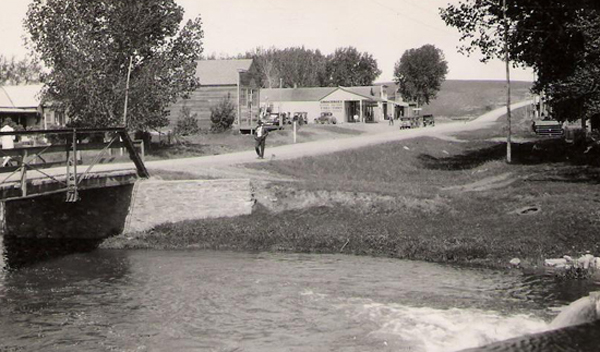
Sand Creek at Beulah, 1930, looking toward the store and
post office.
Of course, trout fishing has its lure. In 1927, Moses "Moe" Annenberg, the publisher of the Daily Racing Form, was on his way to Yellowstone with his son
Walter and stopped for lunch in Beulah and had trout. He was impressed with the fish and inquired as to its source.
He was told that it came from Sand Creek. Impressed with both the fish and the scenery, he looked about for land to purchase.
He ultimately found land owned by Frank La Plante fronting on the creek about five miles south of
Beulan. The land was purchased for $27,500 cash, literally. He was carrying the money with him in his pocket.
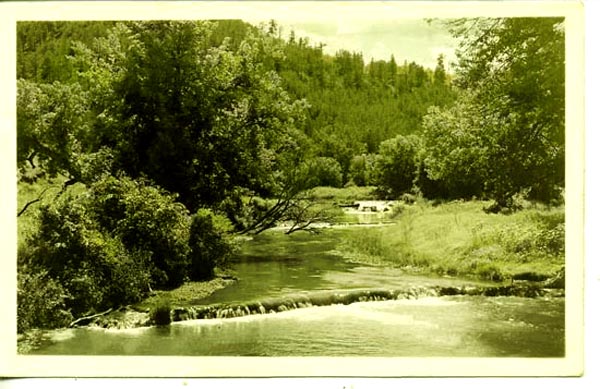
Sand Creek near Beulah.
Thereafter,
Annenberg expanded his holdings to some 2,000 acres and constructed a modest 8-bedroom, 6-bath lodge with guest cottages.
Although there were no cattle on the property, he named
the property "Ranch A." The Lodge was constructed with green logs. Thus as the
logs shrank, the lodge had to be rechinked. In the basement to
handle racing information he installed telephone and teletype equipment in the basement. At the time, Annenberg was actually the fifth largest telephone customer of
American Telephone & Telegraph Company in the United States. He also owned a mansion in Miami Beach. He also became the
owner of the Philadelphia Inquirer. His wife and daughters were not enamored with Beulah or the lodge and visited the lodge only one time.
His son Walter Annenberg would join him on summer trips to the Lodge.
At the time, it was hoped that Annenberg's presence would bring attention and tourism to the area. Indeed in 1936,
the Walpole Land Co. announced plans to turn Beulah into a divorce colony similar to Reno, Nevada. The plans called for
construction of a hotel, casino and numerous modern cottages. Divorces could be obtained at the
end of 60 days in Sundance without any publicity. It, of course, turned to naught.
Not all, however, were pleased with Moe's improvements to the area. Soon locals discovered that fishing in Sand Creek was blocked by "No Treaspassing"
signs. Additionally, Annenberg cleaned snags and shaved its banks of underbrush. Trout fishing was ruined.
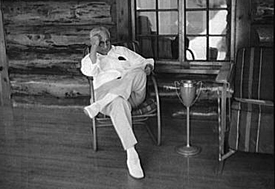 
Lewis C. Gray and Rexford G. Tugwell at Ranch A, August 1936. Photos by
Arthur Rothstein.
Professor Tugwell was an Assistant Secretary of Agriclture during the F. D. Roosevelt administration
and visited Wyoming, Montana, and the
Dakotas as part of his campaign to implement centralized planning for agriculture. He was primarily an academician and in the
early 1920's had made the pilgramage to the Soviet Union. He was impressed with Soviet
centralized planning which he believed "spread such prosperity as there is over a wider area of the population." Thus, he developed
the concept of "voluntary socialism." Gray was Tugwell's assistant. Moe Annenberg detested the Roosevelt administration. It is doubtful,
that Annenberg would have knowingly invited the two to the Lodge. Annenberg had loaned the lodge to South Dakota Govrnor Tom Berry
who in turn invited Tugwell and Gray to the facility.
In 1939, Annenberg was indicted for income tax evasion. As the heat was turned up on Moe,
he sought to buy up all photos relating to the property. He missed one photo of his son Walter.
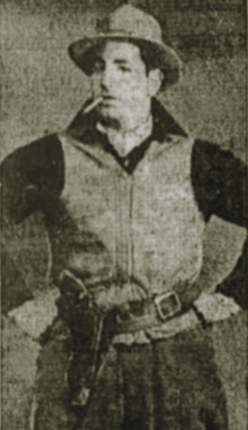
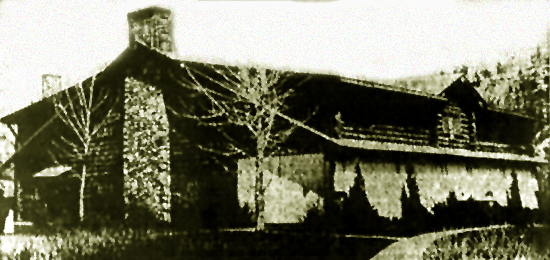
Above, Ranch A Lodge, boarded up, 1940.
Right, Walter Annenberg at Ranch A.
Walter Annenberg later became a well-know Republican philanthropist giving an estimated two billion dollars to
philanthropic enterpises. He was appointed during the Nixon Administration as Ambassador to the
Court of St. James and made an honorary knight, Order of the British Empire, by Her Majesty, the Queen.
In 1940, Moe Annenberg plead guilty to the income tax charges and was sentenced to prison. Not even the
Lodge was immune from the scorn of the federal prosecutor who told the court, "Not one dime was even spent for a cow on this stake of
the lone ranger." The lodge was boarded up.
Moe Annenberg was released from prison
39 days before his death in 1942. Following Annenberg's death, his heirs sold the property to Wyoming Governor Nels H. Smith and some
partners who used the property as a dude ranch. In 1963, the property was
sold to the Federal Government and subsequently used as a fish gentics center and later as a fish diet development center.
As a dude ranch the property was less than profitable. It is now owned by the State of Wyoming.
In the early 1970's during the construction of I-90, the remains of an ancient buffalo jump was discovered on the southern portion of the Vore Ranch.
As a result, the highway was moved to the south. The Vores transferred the site to be
used for interpretive and educational purposes. From the layers of bones, scientists have estimated
that some 20,000 bison were killed at the site and that it was in use as late as 1800 A.D.
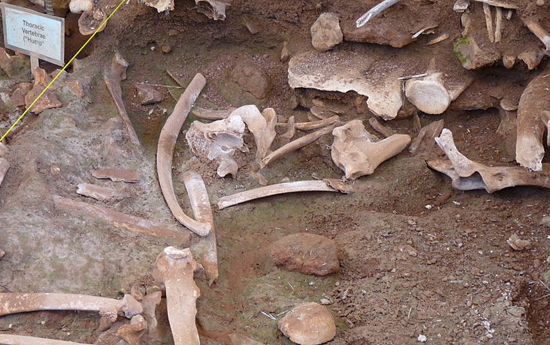
Uncovered buffalo bones at bottom of Vore Buffalo Jump.
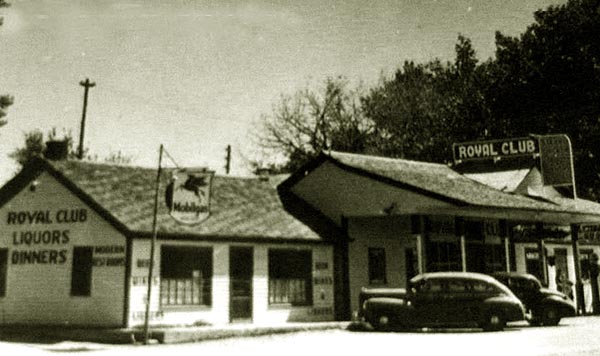
Beulah, Royal Club, about 1950.
In 1980 the Royal Club became the Buffalo Jump Saloon. It closed in 1994 and reopened in 2005.
Next Page: Moorcroft
|